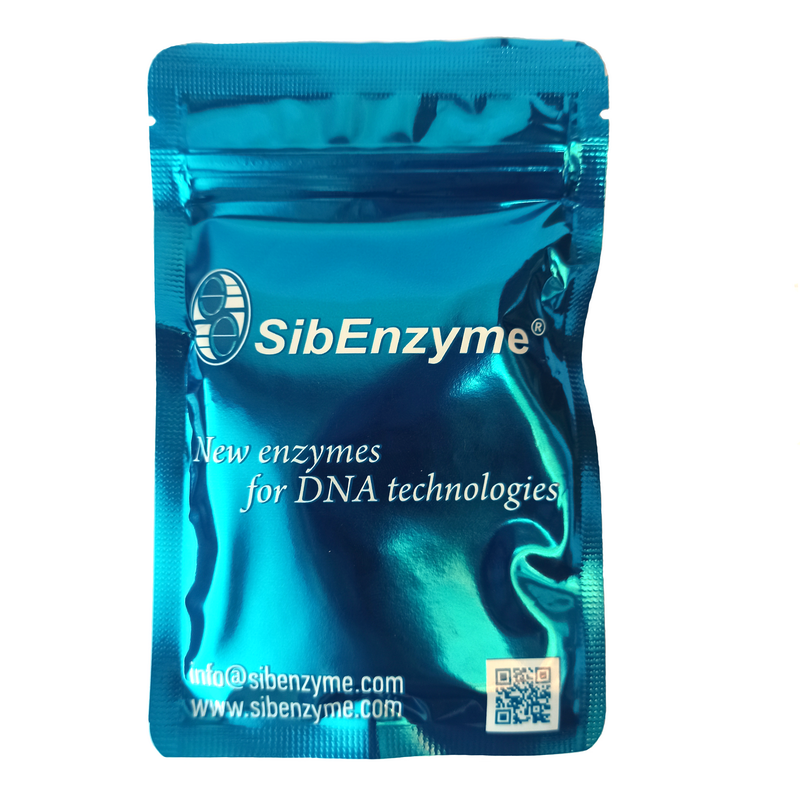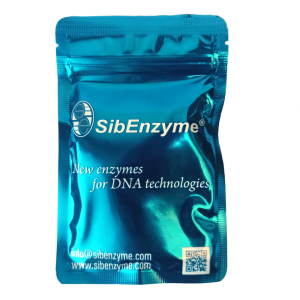Description
Recognition site and hydrolysis position:
| AGCT | AG↑CT |
| TCGA | TC↓GA |
Source: An. E.coli strain that carries the cloned Alu I gene from Arthrobacter luteus
Unit definition:
One unit of the enzyme is the amount required to hydrolyze 1 μg of Lambda DNA in 1 hour at 37°C in a total reaction volume of 50 μl.
Assayed on:
Lambda DNA
Optimal SE-buffer: SE-buffer Y
Enzyme activity (%):
| B | G | O | W | Y | ROSE |
| 75 | 75 | 10 | 50 | 100 | 50 |
Storage conditions: 10 mM Tris-HCl (pH 7.6); 100 mM NaCl; 0.1 mM EDTA; 200 μg/ml BSA; 1 mM DTT, 50% glycerol; Store at -20°C.
Ligations:
After 5-fold overdigestion with enzyme approximately 90% of the DNA fragments can be ligated and recut.
Non-specific hydrolisis:
No nonspecific activity was detected after incubation of 1 μg of Lambda DNA with 4 u.a. of enzyme for 16 hours at 37°C.
Reagents Supplied with Enzyme:
Methylation sensitivity: not tested
Notes:
References:
Roberts, R.J., Myers, P.A., Morrison, A., Murray, K. J. Mol.Biol. 102: 157-165 (1976).
Murat A Abdurashitov, Victor N Tomilov, Valery A Chernukhin, S. Kh. Degtyarev A physical map of human Alu repeats cleavage by restriction endonucleases // BMC Genomics 2008, 9:305
Abdurashitov M.A., Tomilov V.N., Chernukhin V.A., Gonchar D. A., Degtyarev S. Kh. Comparative analysis of human chromosomal DNA digestion with restriction endonucleases in vitro and in silico. // Translated from “Medical genetics” V.6, No 8, pp 29-36, 2007
V.A. Chernukhin, M.A. Abdurashitov, V.N. Tomilov, D.A. Gonchar, S.Kh. Degtyarev Comparative restriction enzymes analysis of rat chromosomal DNA in vitro and in silico // Translated from “Ovchinnikov bulletin of biotechnology and physical and chemical biology” V.2, No 3, pp 39-46, 2006
V.A. Chernukhin, A. A. Boltengagen, G. V. Tarasova, V.S. Dedkov, S.Kh. Degtyarev New Restriction Endonuclease AluBI from Arthrobacter luteus B – AluI Isoshizomer, nonsensitive to Presence of 5-methylcytosine in the Recognition Sequence AGCT // Translated from “Ovchinnikov bulletin of biotechnology and physical and chemical biology” V.3, No 1, pp 21-27, 2007



